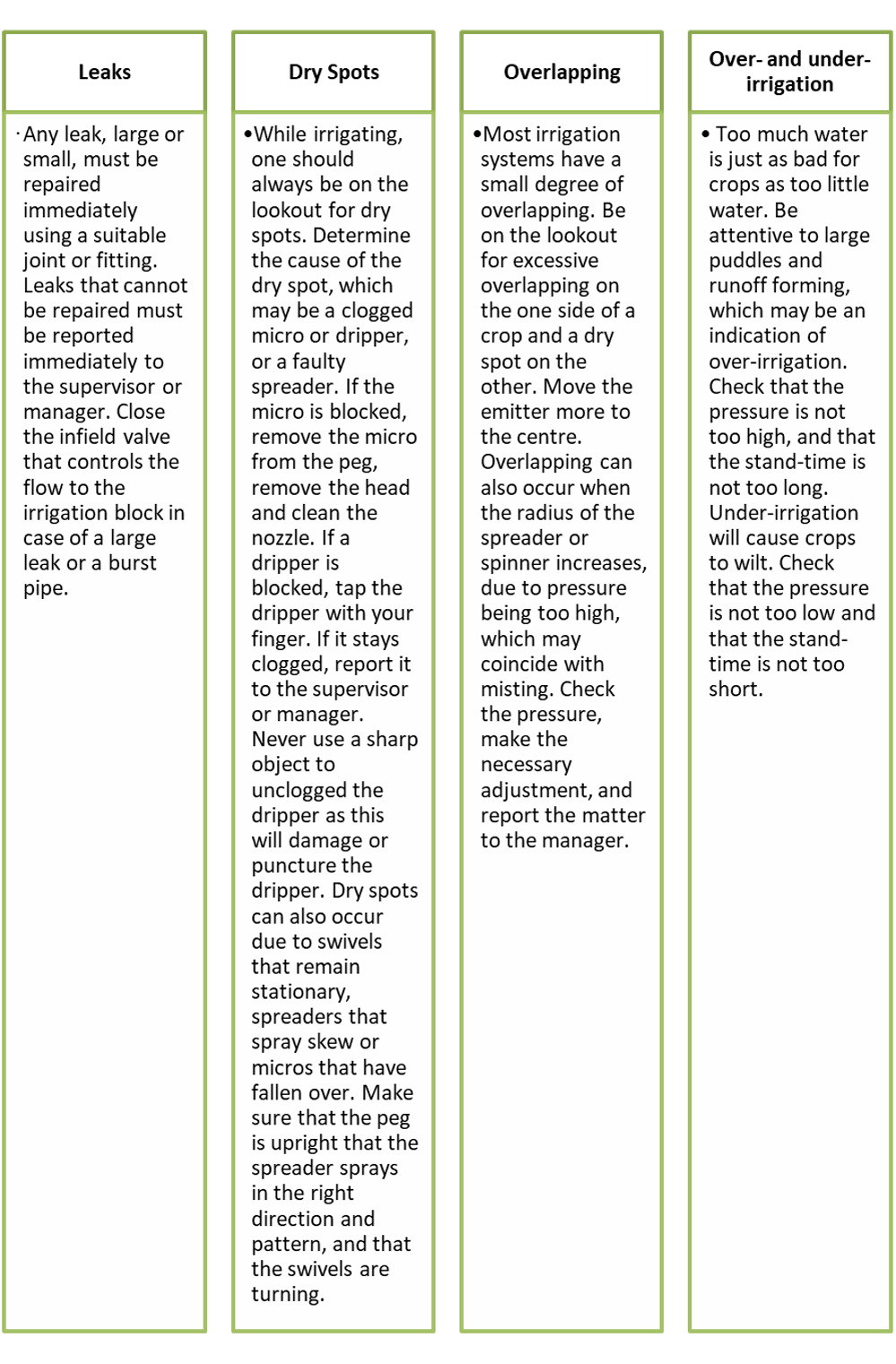In crop production, it is important to have a uniform irrigation pattern in all blocks. the entire root-zone must be wetted uniformly. Regular quality checks on the system are essential to ensure that the prescribed standards are maintained.
While a block is being irrigated, a visual inspection must be done, focussing on the following:

Irrigation Scheduling
The aim of scheduling is to maintain the soil water balance at the optimum level. In other words, the soil must not be too wet, in which case the plants drown, or too dry, in which case the plants will suffer from water stress. The correct stand time and irrigation frequency, or cycle, must be determined and maintained. An irrigation schedule consists of:
- The table of operations lists the different operations and the blocks involved in each operation.
- The irrigation schedule lists the date and stand time for each operation. The longer the stand time the more water is applied, which would apply during hot periods.
- List of pressures and flows, which is used to set the pressure for each block. For the irrigation system to operate effectively, these three components must all be managed properly.
Irrigation scheduling determines the amount of time (stand-time) and water that each block receives, and also indicates the time allowed to change the valves. Scheduling varies between seasons according to the phenology of the crop.
The irrigation schedule is determined and prescribed by the irrigation manager. Keeping to the irrigation schedule ensures that irrigation is effective.
Remember that the stand-time and the time required to open valves vary between seasons and between farms. It is important to open the valve of the specified block at the right time, and to close it at the right time. Failing to do so will affect the crop negatively.
Monitoring Operational Parameters
Operational parameters are the parameters within which the irrigation system should operate to ensure that it functions effectively. These parameters include operating pressures, stand-times and the quality checks as set out in section 1 of this chapter.
During irrigation, these parameters must be monitored and recorded. Recordkeeping of these parameters is important, as this helps the manager to manage the irrigation effectively and to detect possible problems early.
Various aids are available to monitor the implementation of the irrigation schedule. These aids include E-pans, rain meters, tensiometers and probes. This equipment provides information that assist with the calculation of the soil-water balance, thereby enabling one to determine the effectiveness of the irrigation.